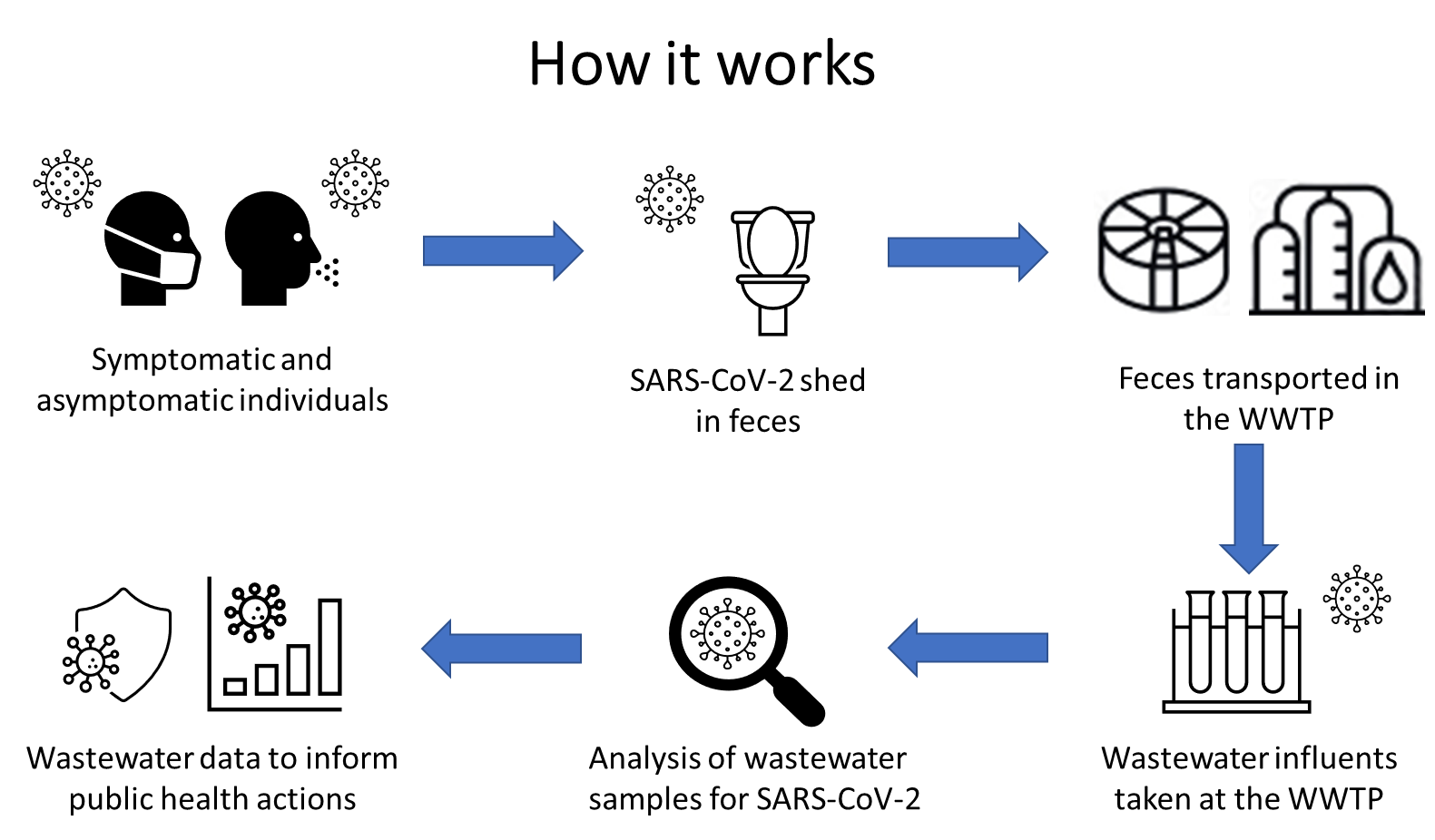Wastewater-Based Epidemiology
Most chemicals after use are disposed of into sewers and ultimately enter sewage treatment plants (STPs). Efficient chemical monitoring at STPs thus can provide up-to-date information on chemical identity, frequency of occurrence, abundance, and exposures occurring in communities. This concept, known as “wastewater-based epidemiology (WBE)”, was first introduced in 2001 as a method for obtaining population health metrics by analyzing wastewater samples. After consumption of chemicals, humans excrete the chemicals and their metabolites, which enter the sewer system. If these excretion products are stable enough in the sewage and efficiently conveyed to STPs, then the levels at which they occur at STPs influent will be proportional to their excretion rates in that community. Thus, the concentration of the chemicals and their metabolites in wastewater influent (untreated sewage) is used to back calculate and estimate the consumption rate of chemicals. This approach has been successfully applied for monitoring the use of pharmaceuticals, illicit drugs, alcohol, and tobacco in recent years worldwide and has shown its ability to provide near-real time, objective, and cost-effective information about chemicals exposures and usage in communities.
As the COVID-19 pandemic began in 2020, WBE has been widely used worldwide to measure the SARS-CoV-2 viral levels in wastewater to track the spread, prevalence, and trends of COVID-19 infection in communities. WBE data can be more reliable and unbiased than clinical data, as the clinical diagnostic capacity is limited mostly to the population having symptoms, but not for all infected individuals including symptomatic, asymptomatic, pre-symptomatic, and post-symptomatic.
Starting in June 2020, the Center has initiated a WBE project to test the SARS-CoV-2 virus in wastewater influent collected from STPs across Long Island, NY. The goal of this project is to serve as a cost-effective approach to track the progress in cases and to serve as an early warning system for detecting and preparing for future outbreaks of COVID-19 to allow for timely interventions (e.g., public notice, management, governmental and medical community planning). In addition, the Center also monitors antiviral drugs, and common over-the-counter and prescription pharmaceuticals to help understand the impact of the pandemic on drug use and consumption. This work is done in collaboration with Suffolk County Department of Health Services, NYS Department of Health, and the Center for Disease Control. For more information please visit the dashboard for the NYS Wastewater Surveillance Network.

